Artist to Artist: Podcasts and Resources for Inspiration
This guest post is written by my friend and fellow artist, Sarah Frazier. Sarah runs Make/Time, a business providing studio and administrative support for artists and I invited her to share some of the resources she uses to connect with other artists and gather inspiration.
I remember as an art student having an extremely vague understanding of how people actually made a living as an artist. Discussing money is often a taboo subject in American culture to begin with, and I found that as artists, we can be particularly squeamish when discussing how we financially support our practice.
However, I’m noticing that this is changing. More and more I’m finding people having discussions that look behind the curtain at how artists are building a sustainable life. And one thing that has become glaringly apparent to me is that there isn’t one “right” way to be an artist. Everyone has to find their own path that is meaningful and purposeful to them and aligned with their own values.
It can still be hard, though, when you are scrolling through Instagram or your Facebook feed to remember that there is real work and sometimes struggle happening behind the scenes. And this visual filtering through social media can often lead to feelings of resentment or jealousy because we can’t see the whole picture.
To help me stay grounded in my path, I love to listen to podcasts that feature conversations with artists and other creatives about their process and journey. Here are some of my favorites:
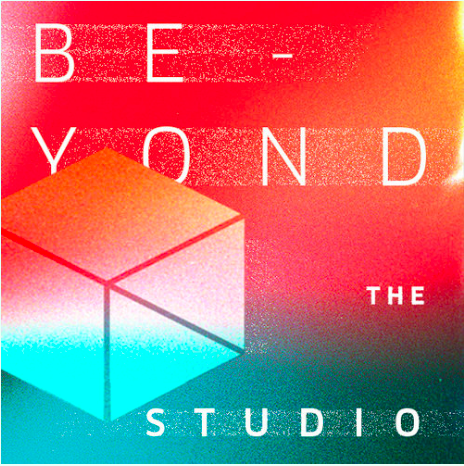
Beyond the Studio – Created by artists Nicole Mueller and Amanda Adams, this podcast talks with artists about the behind the scenes work of their practice, and how they support and sustain themselves as artists.
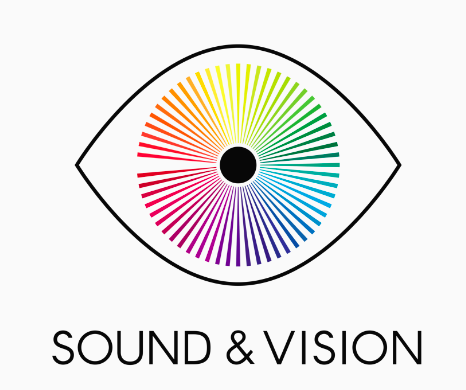
Sound & Vision – Hosted by Brian Alfred, this podcasts interviews artists and musicians about their creative process.
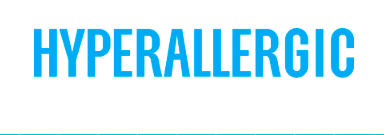
Hyperallergic – Podcast from the Hyperallergic blog around the discussion of contemporary art.
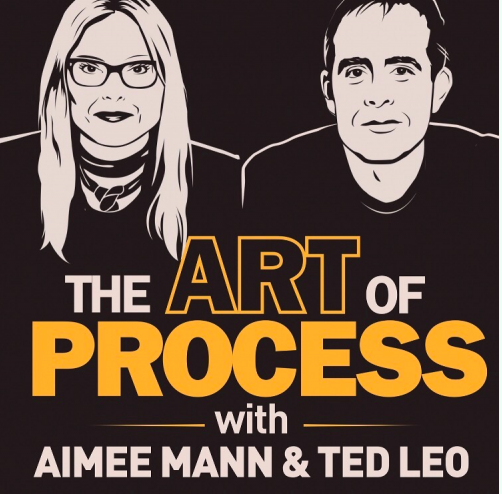
The Art of Process with Aimee Mann and Ted Leo – Musicians Aimee Mann and Ted Leo interview musicians and performers about their creative process and journey. Even though it isn’t visual art specific, there is a lot of overlap in terms of how people talk about managing their time and finding opportunities for their work.
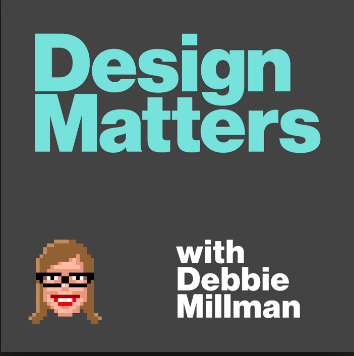
Design Matters with Debbie Millman – Debbie Millman interviews designers, artists, musicians, and other cultural producers about their work, their successes, their failures, and everything in between.
In addition to listening to podcasts, I’m also extremely fond of the books edited by Sharon Louden. Sharon is an amazing artist who makes collaboration a central part of her practice. She has two books that I particularly love that are collections of essays from artists:
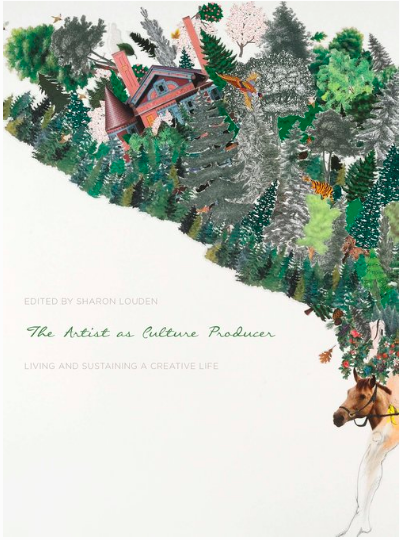
The Artists as Culture Producer: Living and Sustaining a Creative Life 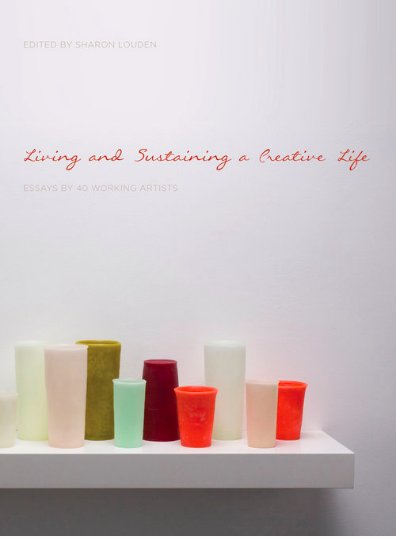
Living and Sustaining a Creative Life: Essays by 40 Working Artists
I’m curious to know what resources you find inspiring in your own studio practice.
Please share your thoughts and resources in the comments below so that we can all grow together!
P.S. I recently interviewed Michele for my own blog and you can read the full interview here. She shares her own journey as an artist and many of the lessons she has learned along the way. Enjoy!
Leave a Comment
What’s So Great About Perfect?
Just what exactly is “perfect” and where do we formulate our notion of “perfection”?
I believe that perfectionism is the root of many an artist’s block.
I’ll never be good enough.
If I can’t do it as well as ____________, why try?
I’m not sure my idea is worthwhile.
What if I fail?
My project could never reach the beauty and perfection of the idea in my head.
We often talk ourselves out of doing something before we even get the chance to start.
I am reminded of something painter Agnes Martin once said:
“We cannot make anything perfectly but with inner contemplation of perfection, we can suggest it.”
I made this video because I’d like to invite you to pick up the reins of a project or piece that is waiting in the wings for the perfect time, the perfect place, materials, amount of money, the perfection of your skills, or whatever notion of perfection is preventing you from diving in.
See what happens.
And let us know, OK?
Leave a Comment
Art & Meditation: Creating A Daily Practice
In this post, I’m continuing our exploration of how artists can use meditation as a
tool to improve their studio practice. You can read more in Part I and Part 2.
Recently I was asked, what is the difference between mindfulness and meditation? While mindfulness is being aware in the present moment, meditation is the means to cultivate mindfulness. It takes practice – just like learning to tie your shoelaces. When you were small, you may have struggled quite some time to learn this. But now you do it so effortlessly, you scarcely know the steps.
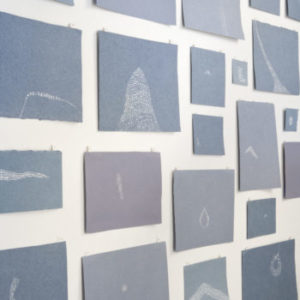
This daily practice of sitting in meditation can also be applied to sitting to make art. Picasso used to say, “Inspiration exists, but it must find you well placed at your work.” To me, “well placed” means showing up regularly to the studio, without fail, even if I’m feeling some resistance to the idea. Because the first ten minutes of work is always the hardest. Once you get going, the work carries you.
You know that feeling when you first wake up? When your thinking is clear and your mind is calm? Many people tell me that is when they have their best creative thinking. I know it’s true for me. When I have a challenging project before me, I like to devote at least 25 minutes on it when I first wake up following my meditation time. Some people get that fresh mind from taking a shower. I think that’s why many people say they get their best ideas in the shower. I think it’s similar to meditation. Your body is washed clean and with it, your thoughts. You’re relaxed, you are not trying to think of anything in particular or do anything else. Your mind becomes clear. Ideas flow in.
Meditation can give you that “fresh mind” any time of the day, no water required. I call meditation a superhighway to new ideas and solutions. When you slow thoughts, observe thoughts, your mind can open to its higher centers of creative thinking.
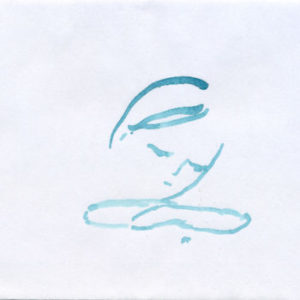
I have found that many artists struggle to find consistency in their creative practice. The first thing I recommend is setting aside 15 minutes to make art. Daily. I find that even the busiest people who truly want to make art can find 15 minutes a day. Consistency is key. Because your body, your mind, your heart and your soul get used to that time. It’s as if you were ready for it. The more you do it, the more ready you are.
The benefit of being consistent is that you find your mind is actually working on your art at other times, in the background, while you are doing other things. The creative problem-solving continues even when you are not actually in the studio.
Here are some things to consider to help you get started:
- Think about your mornings. Is there a way to carve out an extra 15 min to write/paint/draw before you walk out the door to work? I like to have my tea while I draw sometimes.
- What about lunch time? Can you keep some simple supplies such as paper, pens and markers at work for 15 minutes of drawing time during your break?
- What about your evening? After dinner, can you take fifteen minutes alone to draw, sketch, or scribble some ideas?
- No matter what time of day you choose, set a timer. Fifteen minutes goes by quick, and you may be surprised about what happens in a short, focused period of time.
- Create space. Consistency is easier if you have a place to work and have what you need. Whether it’s a corner of your desk with a jar of pencils or an entire room, make sure you have a place to create with your supplies close by.
How do you make time in your busy life for your art? What challenges do you face to building a daily habit? I invite you to share some of your questions or challenges, or your routines and habits that work in the comments section below.
Leave a Comment
Art & Meditation: Transforming Barriers to Creativity
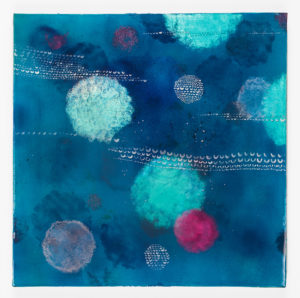
In my last blog post, I introduced you to the idea of including meditation into your daily life as a way to begin tackling those negative internal voices that so often cripple us as artists. I know that a lot of people may be skeptical of how helpful a meditation practice can be, but the benefits of becoming more aware can only serve to help us grow as artists.
A couple of years into my meditation practice, when I was still struggling in the studio with insecurities and self-criticism, I remember a big breakthrough. I was working on a very large painting. It was my largest painting to date and I had invested a lot of time and money making it. But the piece felt flat and unpainterly to me.
I remember one day looking at it and it felt totally unsolvable. I just hated the piece. And I couldn’t think of how to solve it. I was feeling frustrated and discouraged and because I had spent so much on the materials, the thought of abandoning it didn’t seem a viable option. For some reason that day, I had the presence of mind to just stop and sit with it. Not try to think it through or solve it, just be present with it, as I would in meditation. And in that silence, I got an idea for something to try. Since it was about the worst painting I had ever made, I had nothing to lose. When I tried my new idea, I was completely delighted with the results and full of exhilaration and fresh energy for the piece. I broke through what I call “the Wall.”
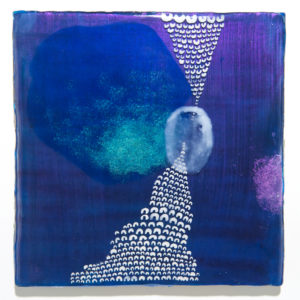
“The Wall” seems to happen over and over in creative work. It’s when you are at an impasse. You’ve already invested quite a bit into the project. So it definitely feels like more is at stake. It can feel like there’s no way out, no solution.
Sometimes the best way through is to do “nothing.” By nothing I mean to empty oneself and become receptive. Meditation can teach us how to do that.
A daily practice of meditation teaches us to discern between mind chatter and our inner wisdom. It’s easy to get caught up in our thoughts, circling over and over with various possibilities and choices without gaining clarity. Without awareness, our thoughts drive us. Having your thoughts driving you is like being dragged around behind a wild unruly stallion. I am inviting you to learn how to get back in the saddle, and guide your mind by developing a respectful, cooperative relationship with it. When we can get some distance between our self and our thoughts, we can choose our thoughts.
What is remarkable is that when we shine the light of awareness on a problem without identifying with it, this problem tends to become less daunting. In our calm awareness, insights and solutions naturally arise. We may be inspired to action, but without the sense of willfulness and effort we may have formerly applied to similar situations. For example, in the past when I was frustrated with a painting, I might have pushed on through, painting over and over it even though I knew it wasn’t going well and I wasn’t enjoying it. I would apply my willfulness and work ethic, hoping for some kind of resolution. And sometimes that approach does work. But these days, when I am at an impasse, I am more likely to stop, sit quietly, close my eyes and go inward, allowing ideas to enter my head. It never takes long, and the most unexpected and delightful solutions present themselves.
What do you do to break through blocks and barriers to creativity or move past what I call “the Wall” in your own practice? I invite you share your thoughts in the comments below.
Leave a Comment
Meditation and the Studio: Becoming Aware
It may surprise you to learn that I wasn’t a star pupil in art school. Not one of those students who carried those black, hard-backed sketchbooks everywhere, bursting with sketches, paintings and collages. Not the kind of art student who spent every waking hour making things. I was a diligent, attentive student. I did the assigned work, attended every class and loved it all. But when I started, I hadn’t the first clue how to turn out original work.

After graduation, I went through a difficult period in my creative life. I knew I wanted to devote my life to making art. But crushing self-doubts and critical voices plagued me every time I tried to work in the studio. I showed up to the studio regularly and managed to get work done, but I suffered from inexplicable fatigue due to the inner emotional stress of these critical voices. I sometimes grew distracted and unfocused. I sought out self-help books and groups for creative people, and slowly and subtly things began to change.
In my work as a teacher and artist for over thirty years, I know of many artists can relate to this feeling of paralysis or being stuck. For me, turning to mindfulness and meditation helped me make that shift to becoming the artist I am today. A lot of people believe that meditation or mindfulness is about reaching some exalted state, but it is actually about learning to be present.
When we practice meditation we naturally become more aware. Aware of our thoughts, our unconscious habits, the feelings and thoughts of the people around us, our impact on others. And the longer we practice, the more we notice. We notice subtle things that were always there – we just couldn’t see them before. Sort of like someone whose fuzzy vision becomes clearer with a new pair of glasses.
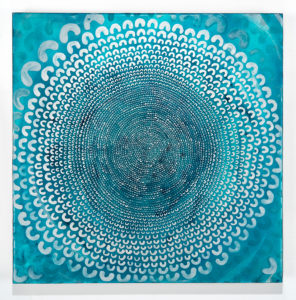
This type of deep noticing can have a profound impact on our creative work. As Paul Valéry put it: “To see is to forget the name of what one is seeing.” By being fully present with what we are creating, we can move beyond preconceptions and habits and encounter the work afresh.
If you’ve never spent time meditating before, you may find your mind to be a very messy place. Most of us have habits and patterns of thought that we unwittingly developed in our youth by simply imitating the patterns of thought of those around us. Patterned thoughts become like grooves in our brain – neural pathways – that can create habits of self-criticism, fear, doubt, cynicism, pessimism or worry. We scarcely notice them because they are so ingrained in us. And if we don’t notice them, we can hardly be aware that it is those habits or patterns of thought that are driving the circumstances around us.
If you are new to meditation, here are a few simple steps to experiment with it:
- Set aside 5 minutes each morning. As early as possible upon arising is easiest because your mind is still fresh and you don’t have as much resistance to the idea. (I’m too busy, I don’t feel like it, it’s too hard.)
- Find a comfortable and pleasant place to sit. One where you can sit in the exact spot every day.
- And if you have a smartphone, I suggest setting a timer with a gentle ring so your mind doesn’t need to be preoccupied with how long five minutes exactly is.
- Settle in: Ensure that your posture us upright, your chin ever so slightly turned down to elongate the back of your neck. Allow your shoulders to be comfortably loose and relaxed, with your shoulder blades on the same plan as your spine, rather than hunched forward.
- Gently close your eyes and just notice that breath. Pay attention as it fills your lungs quite easily and naturally, and then as it is expelled just as easily through your nostrils.
Thoughts will arise. About whether you remembered to take out the garbage last night, or the first appointment of the day, or that annoying thing your co-worker said yesterday. But you are not going to engage with those thoughts just now. You are going to notice the warmth of the breath as it gently flows in and out. And how your jaw has naturally unclenched and how every muscle is gently melting, releasing habitual tension. And the thoughts may come back: How long has it been now? Surely five minutes is up. I can’t sit here doing nothing! I have so much to do today! And then like a little child who has wandered off, you will gently take your mind by the hand and lead it back to the present moment.
If it helps, you can count your breaths. But just stay with the breath. And without noticing it, you have actually drifted into deep connection. You are not thinking. Then you notice that you are not thinking, and now you are thinking again. And so, you go back to your breath. Such is the task of a meditator. Like trying to take a knot out of a tiny thread with a needle. But hang with it. Please. It gets easier. Because you will untangle that knot and then that tiny thread will stretch out before you free of its knots. Before you know it, there is no thread at all.
Do you currently practice meditation in your daily life? Share your experiences in the comments below!
Leave a Comment
Success Talk 3: Holistic Success
It’s easy to get discouraged as an artist by measuring success against external factors such as sales, recognition, or a certain type of studio.
As artists, we have the power to envision and create what we want for our future. I encourage you to envision a more personal and holistic view of success that considers everything from the place you live, to the way you work, and the community you want to have. By placing our intentions front and center, success becomes more about the creative life that we build for ourselves.
What’s YOUR personal idea of success?
I’ve created a downloadable worksheet to explore some of the questions raised in the video above. Use it to help you brainstorm your vision of success. I highly encourage you to spend some daydreaming time, thinking and journaling on your ideal scenarios. You may enjoy doing this with a trusted friend and sharing you ideas with each other.
-
Why do you make art? How did you get started? Is this a new passion or one longstanding? What got you “hooked”? What’s important to you about making art?
-
Who do you want in your community? Who is the audience for your art? Do you prefer to work alone or surrounded by others?
-
What kind of opportunities do you want to have? What kind of impact do you want your work to have? What does making art do for you physically? Mentally? Spiritually?
-
Where do you want to live? Where do you want to make art? What kind of environment suits your needs?
-
What time of day do you work best? Do you prefer concentrated periods of work with deadlines and breaks in between or do you prefer to work the same amount each week? How many hours each day, week or month do you ideally work?
Leave a Comment
